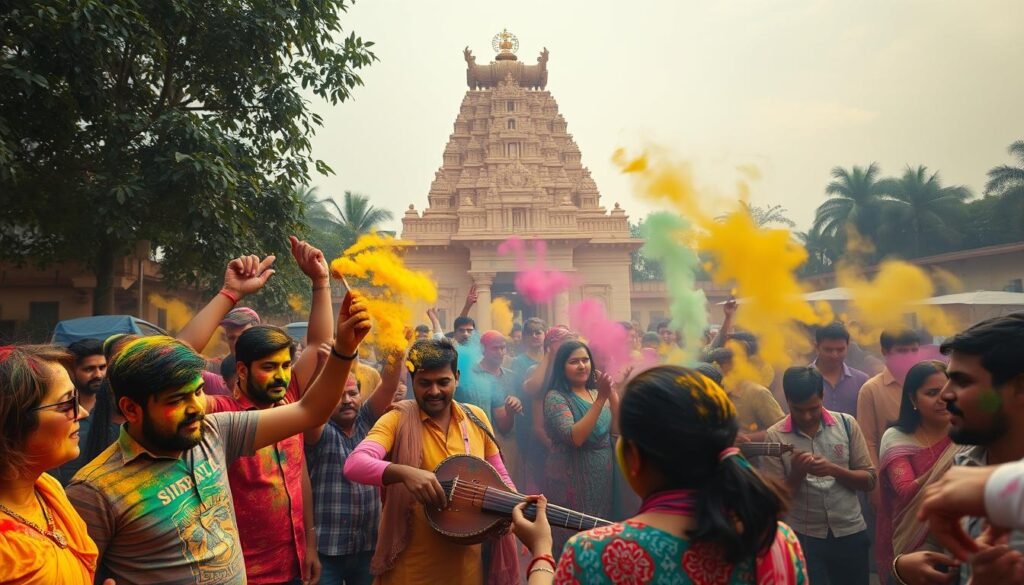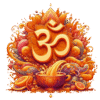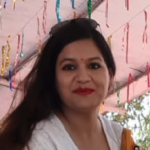Every year, millions join to celebrate Holi. It’s a festival of colors, love, and spring. It happens in late February or March, with Holi 2025 on March 14th.
Holi marks the start of spring and good winning over evil. This is shown by lighting bonfires during Holika Dahan.
Holi is a time to forget old fights, make new friends, and get closer to loved ones. It’s about forgiveness and starting fresh. People of all faiths, like Sikhs and Jains, join in.
Holi is big in India but is celebrated worldwide by Indians. It brings people together, making friendships and community bonds stronger.
Introduction to Holi
Holi lasts a night and a day, starting with Holika Dahan. It has roots in Hindu culture that go back a long time. The colors used in Holi mean different things.
Red means love and fertility. Yellow is for prosperity and new starts. Blue is for Krishna, and green is for life and spring.
Key Takeaways
- Holi is an ancient Hindu festival celebrated as the festival of colors, love, and spring.
- The festival marks the beginning of spring and the triumph of good over evil.
- Holi is a time for people to forget past conflicts, make new friends, and strengthen relationships.
- The celebration of Holi is not limited to Hindus, as it is also observed by non-Hindus, including Sikhs and Jains.
- Holi promotes the use of organic and eco-friendly colors, reflecting a growing trend towards sustainability in celebrations.
- The festival signifies the arrival of spring, renewal, prosperity, and positivity, impacting social cohesion and community bonding.
Understanding the Significance of Holi
Holi is a colorful festival with deep roots. It celebrates the start of spring and love. The colorful flowers of spring show this.
The Holi history comes from old Hindu stories. It tells of Radha and Krishna and good winning over evil. It also marks the harvest season, with farmers praying for a good crop.
The Holi colors mean joy, love, and spring. People throw colored powders and water, showing the festival’s fun side.
- The bonfire ritual, which symbolizes the burning of negative traits and the destruction of evil deeds
- The use of natural and organic colors, which are made from materials such as flowers, herbs, and spices
- The celebration of love and friendship, which is represented by the playful act of coloring loved ones
Holi is about spring, love, and good winning. It’s a time for people to unite, forget differences, and have fun.
How Holi is Celebrated Across India
Holi in India is full of color and joy. Each place has its own special way to celebrate. It’s a time to make new friends and forget old fights.
In Punjab, Holi is called Hola Mohalla. People show off their martial arts skills and march together. In West Bengal, people swing Radha and Krishna idols.

- Gujiya and thandai in Gujarat
- Malpua in Bihar
- Dol Jatra in West Bengal
- Hola Mohalla in Punjab
These traditions make Holi special in India. People celebrate with lots of joy, excitement and innovative ways.
Preparations for Holi Celebrations
As Holi gets closer, it’s time to start getting ready. You’ll need to buy colors, sweets, and more. Also, plan your Holi party by picking who to invite, where to hold it, and what to do.
It’s important to use safe colors for Holi. Natural colors are better for your skin and hair. Before playing, apply coconut oil to protect your skin and hair.
Here are some things you’ll need for Holi preparations:
- Colors (natural and chemical-based)
- Sweets and snacks (such as Gujiya and Thandai)
- Drinks (such as tea and Thandai)
- Coconut oil and other skin and hair protectants
By following these tips, you can have a great Holi party. Make sure everyone stays safe and has fun.
The Role of Colors in Holi
Holi is a fun festival of colors. It’s a time to play and celebrate. The types of colors used have special meanings.
Red, blue, yellow, and green are the main colors. Each color has its own cultural significance.

The colors of Holi have deep meanings. Red stands for love and passion. Blue means courage and calm.
Yellow is special, symbolizing sunshine and joy. Green is for energy, new starts, and hope. It marks the start of spring.
Holi colors also affect our feelings. They bring joy, love, and happiness. They unite people in a celebration of life and color.
Popular Holi Foods and Drinks
Holi is a time to enjoy tasty Holi food and drinks. It’s a chance to celebrate with family and friends. Traditional sweets, savory dishes, and cool drinks are key parts of the festival.
Popular Holi drinks include Thandai. It’s a milk drink with nuts and spices. Lassi, a yogurt drink, comes in sweet and savory flavors. These drinks are great for hot days and are served at Holi.
Gujiya is a must-try traditional sweet. It’s a flaky pastry with sweet khoya and dry fruits. North Indians love it. Malpua and Gulab Jamun are also favorites. Malpua is a flour pancake in sugar syrup. Gulab Jamun is made from khoya and sugar.
Here are some popular Holi foods and drinks:
- Gujiya: a traditional North Indian sweet
- Thandai: a milk-based drink made with nuts and spices
- Lassi: a yogurt-based drink that comes in various sweet and savory flavors
- Malpua: a sweet made from flour pancakes dipped in sugar syrup
- Gulab Jamun: a sweet made from khoya and sugar

Eco-Friendly Holi: Celebrating Responsibly
Celebrating Holi in an eco-friendly way is key to lessen its harm to the environment. Traditional Holi colors have bad stuff like lead and mercury. These can hurt people and nature. To help, we should use organic colors made from plants and herbs.
For an eco-friendly Holi, use biodegradable plates and cutlery. Try to use less water and avoid plastics. Also, picking organic colors helps avoid skin problems. These steps make Holi better for everyone and the planet.

- Make colors from turmeric, beetroot, and henna.
- Clean up with lemon and gram flour instead of harsh chemicals.
- Wear clothes made from organic cotton or hemp.
By following these eco-friendly tips, we can have a sustainable Holi. It will teach us to care for our planet and keep nature beautiful.
Music and Dance During Holi
Music is key to Holi, making the festival lively. Traditional songs have upbeat rhythms and catchy tunes. Holi music ties today’s celebrations to old stories.
Music brings people together during Holi. Songs like “Rang Barse,” “Holi Khele Raghuveera,” and “Balam Pichkari” show the festival’s cultural depth. A good Holi playlist mixes traditional songs, Bollywood hits, and folk tunes.
Music events at Holi boost energy and fun. Holi dance is a big part of the celebration. People dance to traditional songs.
The Phagwa dance is a favorite during Holi. It’s a folk dance that adds to the excitement. Holi music and Holi dance together make the festival unforgettable.
Clothing and Fashion for Holi
At Holi, Holi clothing is key to the fun. Women wear sarees and salwar kameez. Men wear kurtas with pajamas or dhotis.
But now, Holi fashion is all about comfort and color. Women pick crop tops, shorts, and boho dresses. Men go for t-shirts, kurtas, and cotton pants.
Popular colors are pink, yellow, blue, and green. They look great with white or light fabrics.
Choosing Holi outfits means picking comfy fabrics like cotton and linen. Don’t forget sunglasses for sun and powder protection. With Holi lasting days, you can try many outfits and styles.
Looking for Holi clothing? You can find it online, starting at ₹2,092.00 to ₹11,699.00. Many items are discounted by about 21%. Whether you like traditional or modern styles, there’s something for everyone to enjoy at Holi.
Holi Gifts and Greetings
Holi is a time to share Holi gifts and greetings. People love to give Holi gifts or send messages. About 60% of people do this during the festival.
Popular gift ideas include traditional sweets and colorful clothes. People also make Holi greetings to wish their loved ones a happy Holi. Giving gifts on Holi brings everyone together.
- Traditional sweets like gujiyas and thandai
- Colorful clothing and accessories
- Decorative items like lanterns and flowers
- Personalized messages and greetings
Holi is a time to celebrate love and unity. Sharing Holi gifts and greetings is a big part of it.
Holi Safety Tips
As Holi celebrations get closer, it’s key to focus on Holi safety. We need to protect our skin and hair. With over 62K views on Holi safety tips, many are looking for ways to enjoy the festival safely.
Here are some safety tips to keep in mind: Use petroleum jelly or moisturizer to remove colors easily. Wear full-sleeved shirts and long pants to cover your skin. Apply coconut oil or mustard oil to your hair to stop colors from getting in too deep.
It’s also important to know the risks of synthetic colors. They can cause skin irritation, dermatitis, and permanent color changes. Choose non-toxic, organic, or herbal colors, and be extra careful with kids.
By following these Holi safety tips, you can have fun while keeping your skin and hair safe. Don’t forget to drink water, wear goggles, and have emergency numbers ready.
- Apply moisturizer or petroleum jelly to skin before playing with colors
- Wear full-sleeved shirts and long pants to minimize skin exposure
- Apply coconut oil or mustard oil to hair to prevent color penetration
- Opt for non-toxic, organic, or herbal colors, specially for kids
- Stay hydrated and wear protective gear like goggles
By focusing on protecting skin and hair and using these safety tips, you can have a fun and safe Holi.
Conclusion: Embracing the Spirit of Holi
The Holi spirit is special. It brings unity and togetherness to all who join. It shows us the joy of celebrating our differences.
Every year, about 1 billion people celebrate Holi. It’s a big event that shows good can win over evil.
Reflecting on the Lessons of Holi
Holi teaches us about unity and togetherness. These lessons help us in our daily lives. They help us feel part of a community.
By embracing Holi, we build strong bonds. This is key for a happy and united society.
Encouraging Unity and Togetherness
Holi makes us forget our differences. It brings us together. This is what makes a society strong and welcoming.
As we plan for future celebrations, let’s keep the Holi spirit alive. Let’s keep promoting unity and togetherness.
Looking Ahead to Future Holi Celebrations
The Holi spirit is very important. It shows us the power of unity and togetherness. It helps us build a better society.
Looking to the future celebrations, let’s keep embracing the Holi spirit. Let’s make sure Holi stays a joyful and inclusive event for all.
Frequently Asked Questions about Holi
As Holi gets closer, many wonder about its traditions and fun. Let’s explore some common Holi questions. We’ll uncover the magic of this Indian festival.
Common Queries About Holi Traditions
Many ask about Holi’s colors. These bright colors mean good winning over evil, spring’s start, and life’s joy. Each part of India has its own Holi ways, making it special.
Holi FAQs on Preparations and Celebrations
Getting ready for Holi raises many questions. What do you need for fun? How to throw a Holi party? And stay safe? We’ve got answers for you.
Answering the Mysteries of Holi
People also wonder about Holi’s deeper meaning and myths. We’ve looked into stories like Prahlada and Holika. And how colors play a role in Hindu myths.
If you love Holi or are new to it, we hope this helps. Let’s enjoy Holi’s colors together. They bring joy and togetherness to our celebrations.
FAQ
What is the historical background of Holi?
Holi is a festival with deep roots in Hindu mythology. It celebrates love, sacrifice, and good winning over evil. It’s a time to remember these important stories.
What are the traditional rituals and customs associated with Holi?
Holi is filled with special rituals and customs. People burn Holika, play with colors, and share sweets. It’s a time to connect with family and friends.
How do the colors used in Holi celebrations hold significance?
Colors in Holi mean joy, love, and spring’s arrival. Each color tells a part of the festival’s story. They add to the celebration’s beauty.
What are some popular Holi foods and drinks?
Holi is a time for tasty treats. You’ll find gujiya, thandai, and many Indian sweets. These foods add to the fun.
How can Holi be celebrated in an eco-friendly manner?
Celebrate Holi with care for the planet. Use organic colors and reduce waste. It’s a chance to show we care for our earth.
What are some popular Holi fashion trends and traditional attire?
Holi fashion is all about fun and color. You’ll see everything from traditional to modern outfits. Kurtas and sarees are popular choices.
What are some important safety considerations for Holi celebrations?
Safety is key during Holi. Protect your skin and hair. Be careful with colors and avoid accidents.
How can the spirit of Holi be embraced and celebrated in the future?
Holi teaches us about unity and good winning. Let’s keep these values alive. Celebrate Holi with joy and togetherness.
Shuchi Pandey is a distinguished author and scholar with a profound expertise in Hinduism with a leading voice in the study and interpretation of Hindu philosophy, rituals, and cultural traditions. She aims to bridge the gap between academic rigor and engaging storytelling by exploring the depths of Hindu thought, from the ancient Vedas to contemporary practices.


